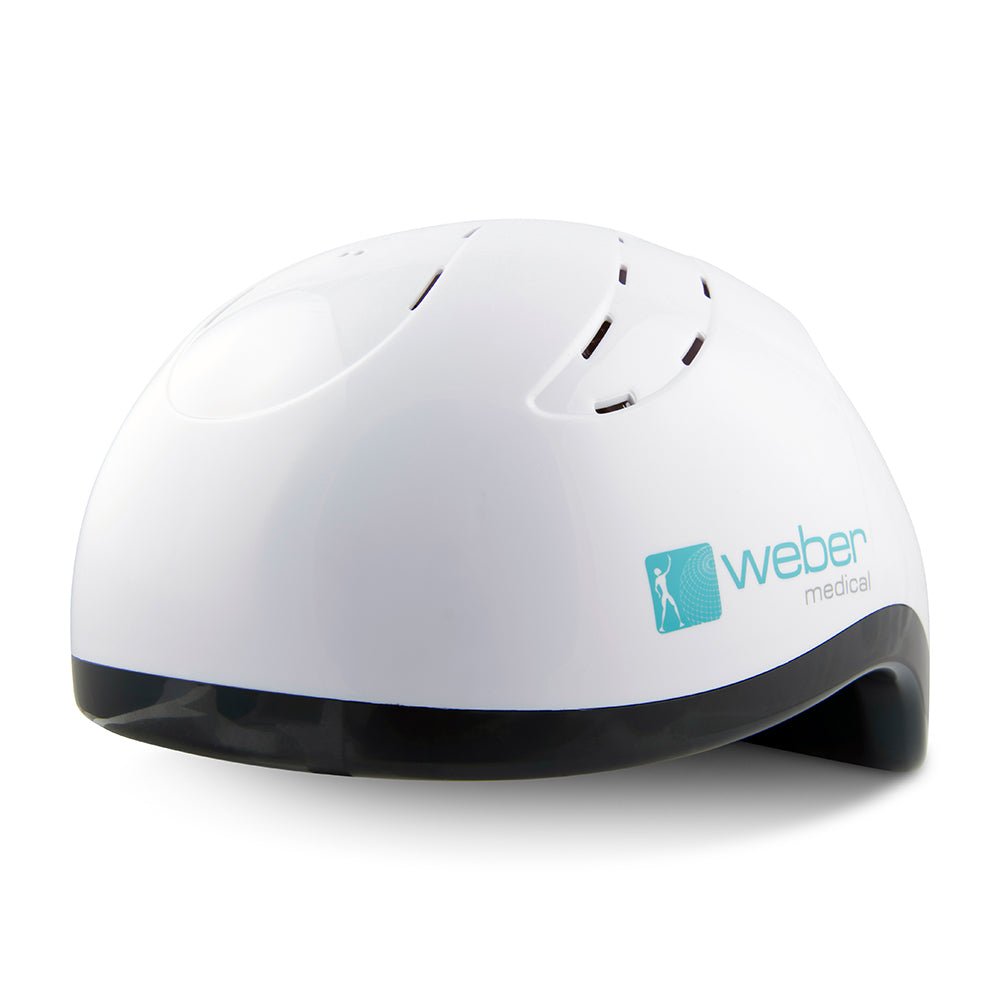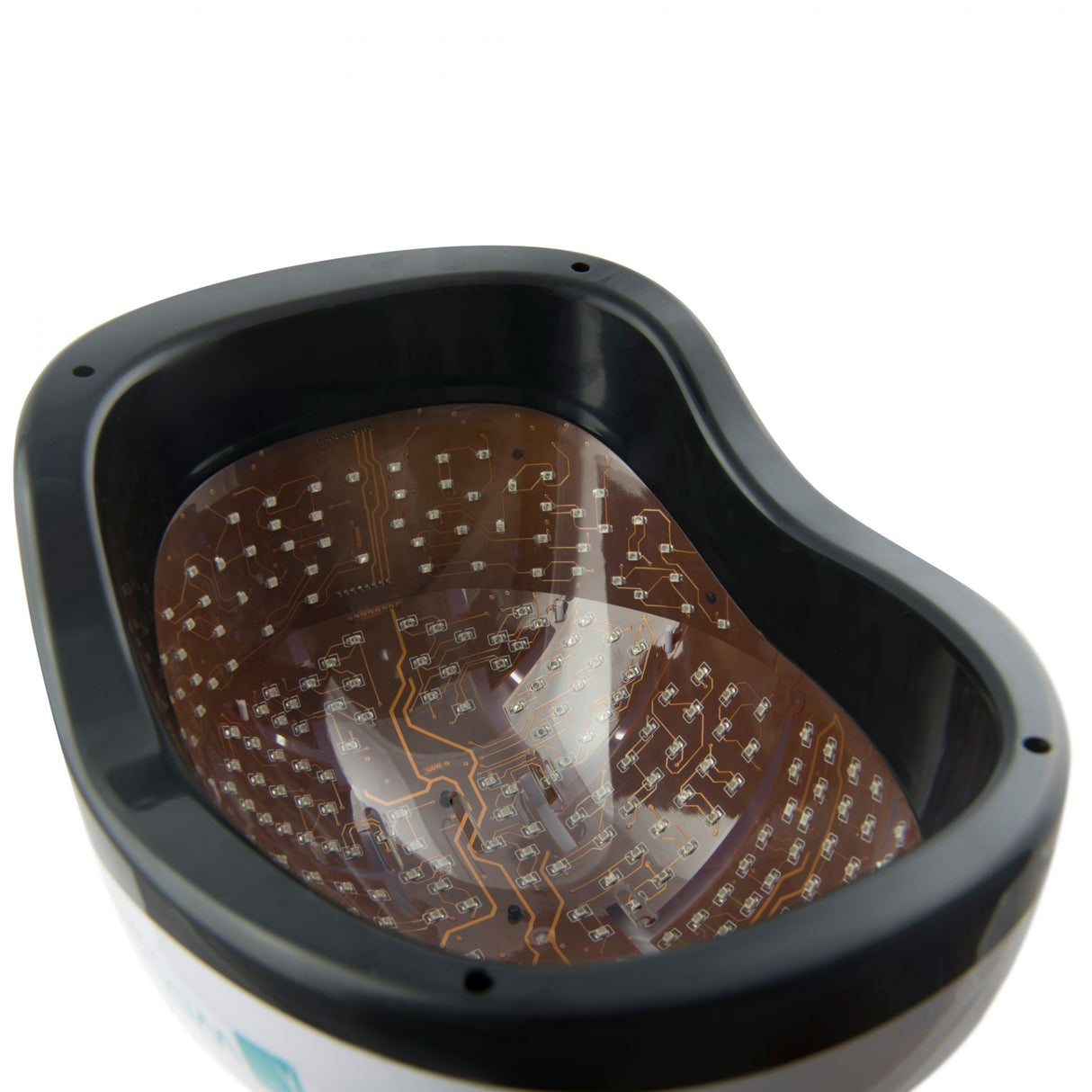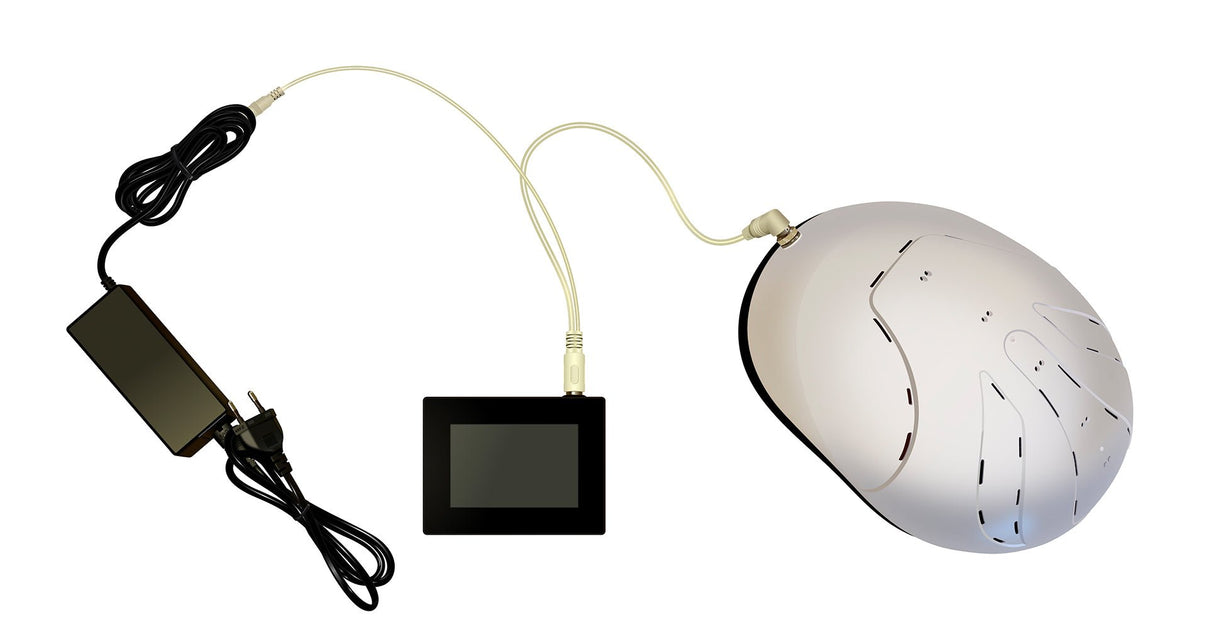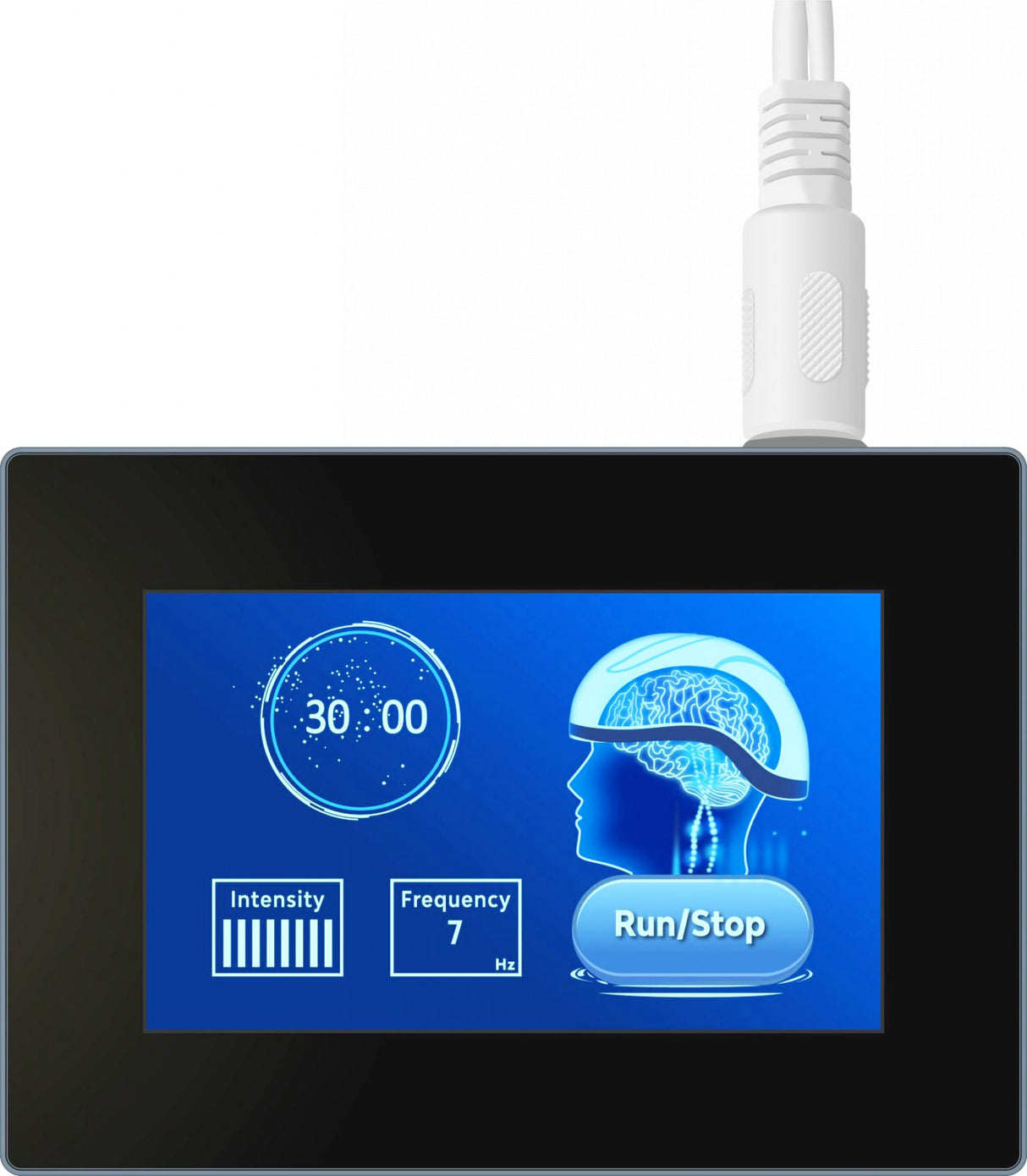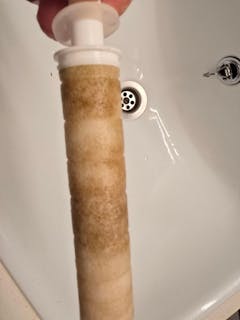Weber Medical Infrared Helmet for optimal brain performance and biohacking
Weber Medical Infrared Helmet for optimal brain performance and biohacking - White Black is backordered and will ship as soon as it is back in stock.
Attachment
Weber Medical Infrared Helmet - A revolution in brain health, anti-aging and biohacking
Advanced transcranial photobiomodulation (tPBM) for optimal brain function
Weber Medical's infrared helmet represents the latest in brain health technology and biohacking. Using 320 powerful infrared LEDs with a therapeutic wavelength of 810 nm, the light penetrates deep into the brain tissue and stimulates the mitochondria to increase energy production. This improves neuroplasticity, memory, mental acuity and helps reduce inflammation and oxidative stress – two factors that accelerate aging.
Technical specifications
- Number of diodes: 320 LEDs
- Wavelength: 810 nm (near-infrared light)
- Output power per diode: 50 mW
- Total output power: 16W
- Adjustable intensity: 25%, 50%, 75% or 100%
- Frequency range: 1-20,000 Hz
- Recommended use: 20-30 minutes per day
- Input power: 5V DC, compatible with standard USB charging
How does photobiomodulation help your brain?
Photobiomodulation (PBM) is a non-invasive treatment that uses light energy to stimulate the cells in the body, especially the mitochondria, which are responsible for producing energy at the cellular level. In the brain, PBM can help improve blood flow, increase oxygen saturation, and promote the repair and growth of neurons. This in turn can improve cognitive functions such as memory, attention and decision-making. Research has shown that PBM can be beneficial for a number of neurological conditions, including traumatic brain injuries, stroke, Alzheimer's disease and Parkinson's disease.
The advantages of using 810 nm light
- Deep tissue penetration: 810 nm light can reach deeper into body tissue compared to other wavelengths.
- Increased ATP production: Stimulates the mitochondria to produce more energy.
- Anti-inflammatory effects: Reduces inflammation in the brain.
- Improved blood flow: Increases oxygen supply to the brain.
- Neuroprotection: Strengthens the brain's ability to adapt and regenerate.
Advantages of the Weber Medical infrared helmet
1. Improved memory and cognitive function
- Stimulates the production of Brain-Derived Neurotrophic Factor (BDNF).
- Improves synaptogenesis (formation of new connections between nerve cells).
- Reduces brain fatigue and improves mental clarity.
2. Neuroprotection and anti-aging
- Reduces oxidative stress and inflammation.
- Prevents age-related cognitive decline.
- Improves mitochondrial function.
3. Strengthened recovery after brain damage and stroke
- Promotes the regeneration of damaged nerve cells.
- Reduces inflammation and oxidative stress.
- Can contribute to faster recovery of function.
4. Treatment of depression, anxiety and stress
- Increases serotonin and endorphin production.
- Modulates the HPA axis and reduces the stress response.
- Reduces cortisol levels.
5. Combating "brain fog" and chronic fatigue
- Improves oxygen supply to the brain.
- Reduces inflammation and oxidative stress.
- May reduce long-term symptoms after COVID-19.
6. Reduces neuroinflammation and amyloid-beta plaques
- Can contribute to the prevention of Alzheimer's disease.
- Improves cerebrovascular function.
- Reduces inflammation.
7. Improved sleep quality and regulation of circadian rhythms
- Stimulates melatonin production.
- Regulates circadian rhythms.
- Can help people with insomnia.
8. Help against tinnitus and hearing-related problems
- Can reduce inflammation in the inner ear.
- Can be combined with red light in the ears.
- Strengthens the auditory nervous system.
How to use the helmet?
- Place the helmet on your head and adjust it for comfort.
- Select the desired intensity and frequency via the touch screen.
- Use it daily for 20-30 minutes for optimal results.
- Regular use over time gives the best results.
Disclaimer and disclaimer
Use of health technology is at your own risk and should always be done in consultation with a doctor. The effect of the products may vary from person to person. Devices that require medical expertise must only be used by people with the relevant education. Keep out of the reach of children. Uno Vita AS does not claim that our products can cure disease, regardless of any research that suggests this.
Freedom of expression and right to information
Uno Vita reserves the right to share publicly available research and information on health and wellness technologies, natural substances, vitamins and the like. We do this with reference to national and international laws on freedom of expression and belief.
Scientific references
- Hamblin, M.R. (2016). Shining light on the head: Photobiomodulation for brain disorders.
- Salehpour, F., et al. (2018). The potential of transcranial photobiomodulation therapy for treatment of major depressive disorder.
- Naeser, M.A., et al. (2014). Significant improvements in cognitive performance post-transcranial, red/near-infrared LED treatments in chronic traumatic brain injury.
- Cassano, P., et al. (2015). Near-infrared transcranial photobiomodulation for major depressive disorder: A pilot study.
- Johnstone, D.M., et al. (2015). Photobiomodulation as a neuroprotective strategy in Parkinson's disease models.
- Zomorrodi, R., et al. (2019). Effects of transcranial photobiomodulation on cognitive function in healthy adults.
- Saltmarche, A.E., et al. (2017). Transcranial photobiomodulation in Alzheimer's disease: A pilot study.
- LeBaron, T.W., et al. (2020). Photobiomodulation therapy: Molecular mechanisms and therapeutic applications.
